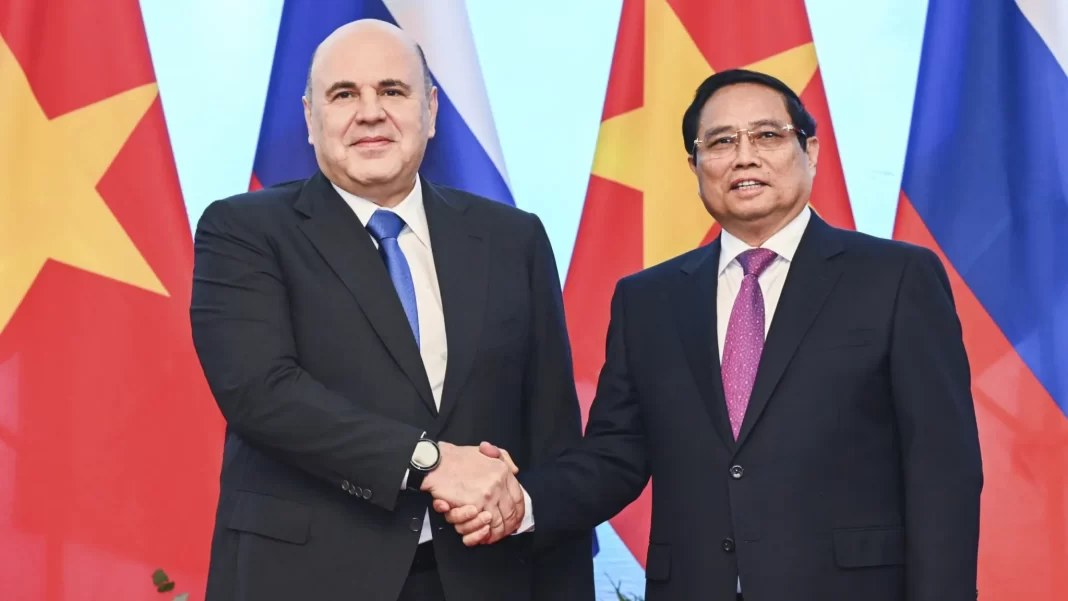In a significant development, Russia and Vietnam have agreed to enhance cooperation in nuclear energy. The agreement was announced during Russian Prime Minister Mikhail Mishustin’s visit to Hanoi, signalling a deepening of ties between the two nations. The deal includes building nuclear power plants in Vietnam and sharing Russian civil nuclear technology. This collaboration reflects broader global trends and highlights the increasing role of nuclear energy in achieving sustainable energy goals.
Reviving Nuclear Energy
The agreement is a testament to the global revival of nuclear energy. Governments worldwide are turning to nuclear power as a reliable, non-carbon-based energy source. This shift is driven by the urgent need to combat climate change and transition to greener energy solutions. For Vietnam, adopting nuclear energy is also about reducing reliance on external energy imports, strengthening energy independence, and meeting rising domestic demand.
Russia’s Growing Role in Global Nuclear Markets
Russia’s involvement in Vietnam’s nuclear energy ambitions highlights its enduring influence in the nuclear technology sector. Rosatom, Russia’s state-owned nuclear energy company, has long been a global leader in nuclear reactor construction and technology export. Despite facing challenges from Western sanctions due to the war in Ukraine, Rosatom continues to secure new international partnerships, demonstrating that Russia remains a key player in this high-tech field.
Western sanctions may have curtailed Russia’s operations in Europe, but Moscow is increasingly finding new markets in Asia, Africa, and Latin America. The partnership with Vietnam serves as a reminder that Russia’s economic and diplomatic reach remains significant, even amidst ongoing geopolitical tensions.
Challenges for the U.S. in the Nuclear Revival
While the U.S. had ambitions to lead the global nuclear energy revival, its outdated nuclear manufacturing capacity has hindered its ability to compete. Building new reactors domestically has become a challenge due to logistical and technological setbacks. This shortfall has left room for competitors like Russia and South Korea to dominate the international market.
The U.S. is also grappling with increased domestic energy demand due to the rise of energy-intensive industries, such as artificial intelligence. This leaves little room for American companies to focus on international nuclear partnerships, creating opportunities for nations like Russia to step in.
Vietnam’s Balanced Approach
Vietnam’s decision to collaborate with Russia is part of a broader strategy of non-alignment. In an increasingly multipolar world, Vietnam has chosen to partner with countries that best meet its immediate needs rather than aligning exclusively with one global power.
The United States has been urging Vietnam to distance itself from Russian arms purchases as part of its strategy to counter China’s growing influence in Southeast Asia. Despite these pressures, Vietnam has opted to maintain a pragmatic approach. The nuclear agreement with Russia reflects Hanoi’s determination to prioritise national interests over external demands, balancing relations with major powers like the U.S., China, and Russia.
Implications of the Agreement
This partnership could serve as a model for other nations navigating the complexities of a multipolar global order. As countries increasingly seek diversified partnerships to address their unique energy and security challenges, non-alignment strategies like Vietnam’s are likely to become more common.
The agreement also underscores the broader geopolitical shifts in the wake of the Ukraine war. While Western countries have sought to isolate Russia, deals like this highlight Moscow’s ability to remain economically relevant and diplomatically active.
A Win-Win Scenario
The Russia-Vietnam nuclear energy partnership offers clear benefits for both sides. Vietnam gains access to advanced nuclear technology and a pathway to bolster its energy independence. Meanwhile, Russia secures another avenue to demonstrate its technological prowess and maintain its influence in Southeast Asia.
Looking ahead, the collaboration may inspire similar deals in the region and beyond, as countries explore the potential of nuclear energy to address their energy needs sustainably. This agreement marks a step forward in strengthening bilateral ties while contributing to global energy transition efforts.

